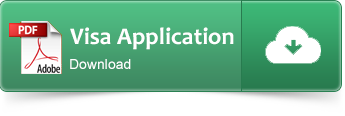The name (Sudan) was designated to the lands that located Southern of the African Greater Desert which extends from the Atlantic Ocean in the west to the Red sea and the Indian Ocean in the east. Nowadays, the said name is designated to the region which is located in the South of Egypt in the middle part of the Nile Basin. The name (Koch) was also designated in the Old Testament and the Assyrian texts to the same part of land, but the present name (Sudan) is the plural of a Greek word that means (black people).
Location and Area:Sudan is located in the northeastern part of Africa between the 22.4 latitude northern equator and 38.22 longitudes. The country occupies the middle part between Africa and the Arab World which Such a location distinguishes Sudan with a unique characteristic considering it the main passage between north and south of Africa. Sudan also was the main passage for the pilgrim and trade convoys that forward from the east of Africa to the Holy Lands until the mid of the current century.
The Total area of the Republic of the Sudan is about (1.882.000) million km square which makes it one of the largest African countries and it comes sixteenth among the largest countries of the world. Sudan is the third largest Arab country and the second African's.
The countries neighboring the Republic of the Sudan are: Egypt, Libya, Chad, Central Africa, Ethiopia, Eritrea, South Sudan and the Red Sea.
The arable lands are estimated to be (200) Million Feddans (84) Million Hectares.
The climate is a tropical one, which is characterized by increase of heat degrees on most days of a year, being very dry in the far north then graduates to be semi-wet in the far south, prevails in Sudan.
The annual rain rates range from almost zero in the far north to 500 mm in the central Sudan to more than 1000 mm in the far south of the Sudan.
The River Nile, including all its various branches, plays an important role in the Sudan's economic, social and cultural life and in its foreign relationships. Water of the River Nile and all its various branches are utilized in generating electricity from Dams of Al-Roseires, Sinnar, Khashm Al-Girba and, Jabal Awliaa Marawe and Kajbar as well as in navigation and fishing.
Storage of groundwater is estimated to be about (900) Billion meters utilized in irrigation purposes and civil usages.
Airports, Airstrip and SeaportsThere are (17) airports in Sudan of which (6) are international airports, the biggest one thereof is the Khartoum International Airport, which studies are currently made for its transferring and reconstruction, and (11) local airport distributed in states: Atbara, Al-Fashir and others. There are (63) airstrips currently in the different parts of Sudan.
The Red Sea is the only navigation outlet for Sudan to the external world. Port Sudan, Suakin, Awseif and Bashair are the Sudanese ports. Coast of the Red Sea is characterized by existence of coral phylum which provides lodging to different types of rare marine creatures.
PopulationThe population of the Republic of the Sudan at the beginning of the year 2011 is estimated to be about (33.419.625) persons at a growth rate of 2,53 annually, population density reaches 14 persons for one km square. Population of rural areas constitutes 24,6% of the total population. Population of Sudan is comprised from tribes that descended from Arab, African and Nubian origins.
Religions: Islam, Christianity and local beliefs.
Languages: Arabic, English, local languages and dialects.
System of Governance:
According to the Interim Constitution of the year 2005, System of Governance is federalism.
Levels of governance are represented in the following:
- Level of the national governance that exercises power for protecting sovereignty of Sudan, guaranteeing safety of its lands and enhancing welfare of its people.
- Level of states' governance that exercises power at the level of states allover Sudan for providing public services through the nearest level to citizens which is the level of local governance which is available all over Sudan. In Sudan there are 17 states.
- Khartoum is comprised of three towns, Khartoum which is the political capital, Omdurman the national capital and Khartoum North the industrial capital.
Textiles – cement – food oil – sugar – soap – hide products – food stuff – mining and transformational industries.
Animal ResourcesNumber of animal resources per million heads until the year 2005. Camels: 3,547 – Goats: 42,179 – Sheep: 49,797 – cows: 40,369
Forestry ProductsHashab and acacia trees contribute in constituting a part of the Sudan's forestry wealth where area cultivated with Hashab trees reaches (40120) Feddans producing (15200) Million tons average while Hashab trees area reaches (64210) Feddans producing about (3450) Million tons per year. Wood production reaches (11250) meter cubic sawn and (141450) meter cubic as fire wood while average of charcoal production per sacks reaches (1772541) a year.
Minerals and PetrolProduction of minerals per ton until beginning of the year 2005: Gold (4.73), chrome (14666), gypsum (5132), salt (48685, silver (2, 40). Crude oil 153,094 barrel per day for the year 2011.
Exports:Sudan has plentiful resources where animal resources, Gum Arabic, cotton, oil seeds , gold and crude oil are significant sources for treasury of the Country besides mining petrol will definitely contribute in realizing welfare for Sudan's people.

